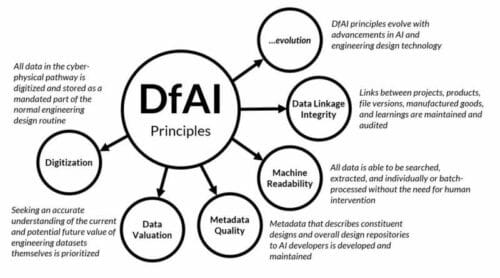Researchers at Carnegie Mellon University have identified Design for Artificial Intelligence as the missing piece of AI engineering.

Engineering design helps us achieve a high level of optimisation to meet the requirements of an objective. Adapting the concept and practices of system design engineering in the developing computational models may turn out to be a very efficient approach. There are countless opportunities for breakthrough improvements in how we develop new technology using AI in engineering design, but to succeed in these challenging areas, engineers must understand a new speciality—Design for Artificial Intelligence.
Researchers from Carnegie Mellon University have developed a Design for Artificial Intelligence (DfAI) framework in collaboration with researchers at Penn State University to educate and encourage the academic and industrial engineering community to adopt AI engineering design. Hence to design and develop better systems integrating AI into the engineering design process can be the very beginning.
The team outlines three personas as necessities for DfAI: engineering designers, design repository curators, and AI developers. An engineering designer may be a person or team responsible for developing the specifications of a new project. They are the problem solvers who can understand the engineering constraints as well as the AI algorithms. Design repository curators must take the role of a database maintainer one step further by having engineering design and manufacturing knowledge to deliver design engineers the data management tools to meet workflow demands and be extensible to future demands. Finally, the AI developers must be able to ideate, develop, market and continuously improve AI software products to help the design engineers.
Chris McComb, Associate Professor of Mechanical Engineering at Carnegie Mellon summarizes,”Unless we augment design engineers with next-generation design and manufacturing software based on deeply-integrated AI, our ability to design novel and useful technology will fall short of the potential of these new manufacturing techniques.”
When introduced, the concept of DfAI can be easily adopted in a variety of industries, for example computer science applications such as products manufactured by digitally-driven techniques like additive manufacturing, naturally have a complex cyber-physical pathway and yield personnel that would be well-suited in adopting and driving DfAI principles. It can also be extended to aerospace and medical device applications as they are accustomed to follow rigorous procedures and reliable data storage techniques in the context of very complex engineered systems, so they likely have the resources to begin the DfAI adoption process.
Reference : Glen Williams et al, Design for Artificial Intelligence: Proposing a Conceptual Framework Grounded in Data Wrangling, Journal of Computing and Information Science in Engineering (2022). DOI: 10.1115/1.4055854







